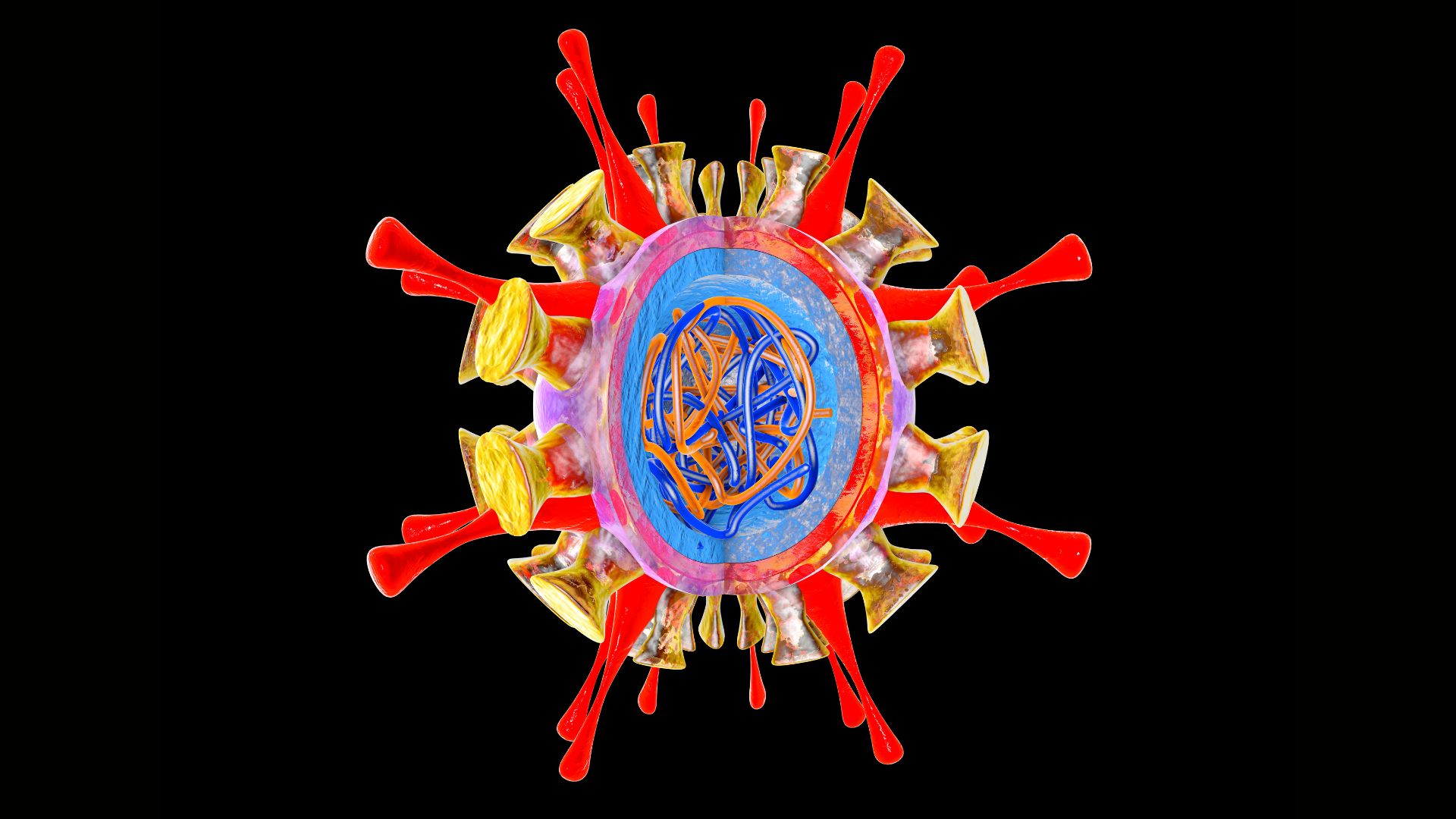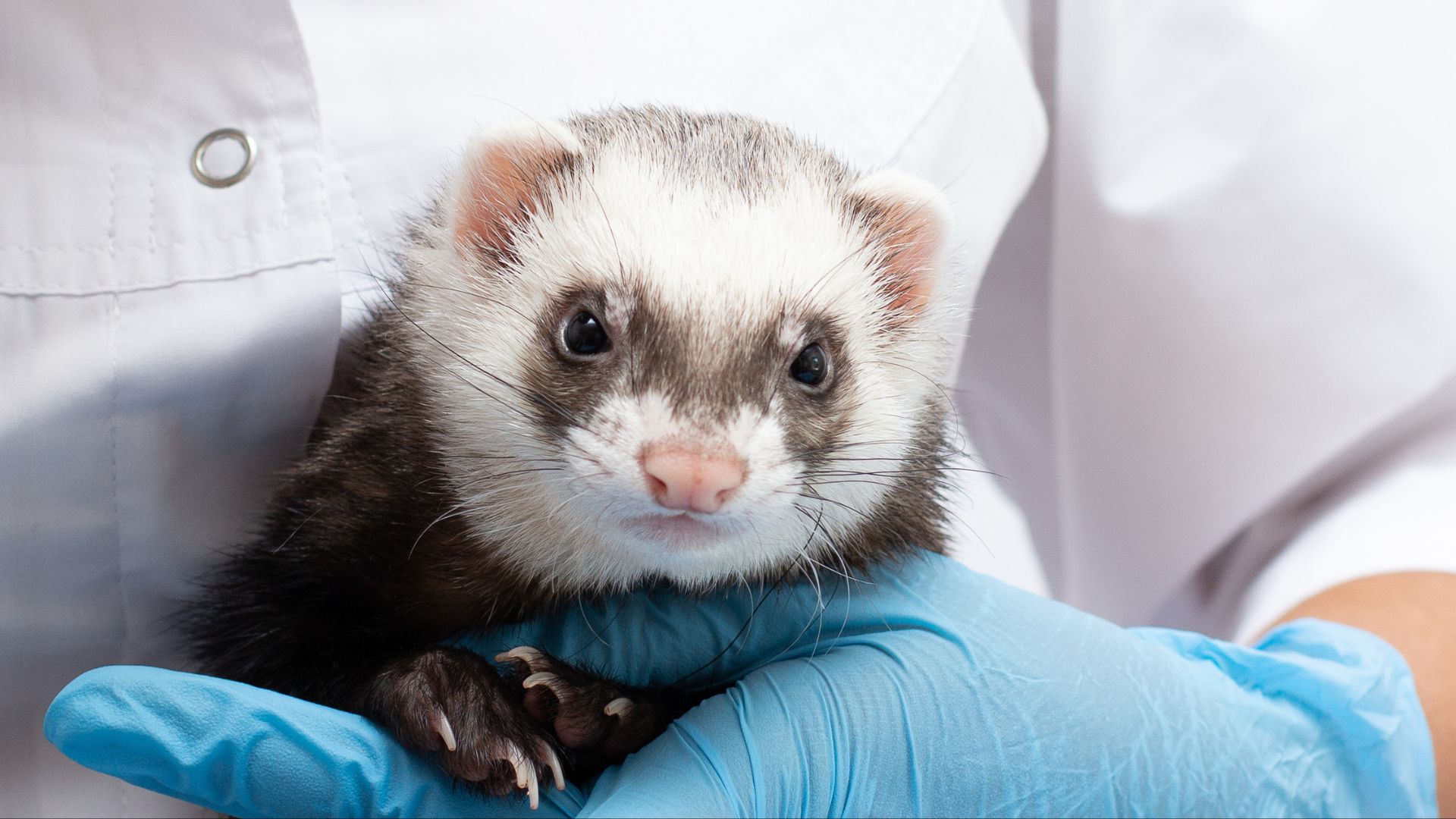
H5N1 bird flu is getting better at spreading between mammals but does not yet spread as easily as seasonal flu, a Centers for Disease Control and Prevention (CDC) study suggests.
H5N1 has been detected in at least 46 people in the U.S. this year, causing only mild illnesses so far. The CDC maintains that the virus still poses little risk to the general public, but as a precaution, scientists have explored whether the avian virus has adapted to infect mammals.
H5N1 has been detected in about 50 mammal species, including cattle. The question is how adept the avian virus is at infecting mammals, and how easily it can spread when it jumps into a new species, like humans. In the ongoing outbreak, researchers haven't found any examples of human-to-human transmission, but they're watching out for signs.
In the new study, published Oct. 28 in the journal Nature, the CDC used ferrets because the animals are susceptible to human influenza and display similar symptoms.
"Because they expel virus into the air, they have been used as a model system to study airborne transmission," said Seema Lakdawala, an influenza virologist at Emory University who was not involved with the study but collaborates with the CDC on other projects. The lungs of humans and ferrets bear a similar distribution of receptors that the virus can use to enter cells, Lakdawala noted.
The study showed H5N1 transmits easily between ferrets under certain circumstances, suggesting it could spread between other mammals.
"It doesn't mean that because the virus transmits in ferrets, it will transmit in humans," said Troy Sutton, a veterinary researcher at Penn State who was not involved with the study. Rather, it shows that the virus may be gaining in its ability to spread between mammals, he clarified.
Deadly disease
The CDC researchers used an H5N1 virus sampled from a dairy farmworker in Texas, who caught one of the first human cases this year. This virus bore a mutation called E627K, which has been linked to the flu pandemics that took place in 1918, 1957 and 1968, Sutton told Live Science.
E627K changes a protein that helps the virus replicate, enabling it to do so more efficiently at colder temperatures, Sutton explained. Human body temperature tends to be a few degrees Celsius lower than birds', so this mutation plays a role in helping bird flu viruses infect humans.
Surveillance has not found any further cases in humans or mammals involving this mutation, Lakdawala said. But the CDC has studied its effects on ferrets in case it reappears.
When scientists deposited H5N1 directly into ferrets' noses, the animals developed severe symptoms — such as diarrhea, difficulty breathing and fever — and, in some cases, they died. By contrast, the infections among people in the U.S. have been quite mild, with minor symptoms, like eye redness.
Related: 21-year-old student dies of H5N1 bird flu in Vietnam
One possible explanation is that researchers administered millions of virus particles to the ferrets, which Sutton said is standard practice for flu studies in ferrets.

"It is probably higher than what a person would receive if they were exposed in a room to somebody with human influenza," he said. However, he added that a milliliter of unpasteurized cow milk can carry 100 times more virus than the ferrets received, so it's possible that farmworkers may be exposed to higher doses.
Humans also have preexisting immunity to related flu strains that afford them some protection, whereas the ferrets in this study grew up on flu-free farms. In a paper that hasn't yet been peer-reviewed, Lakdawala found that ferrets with immunity to the 2009 H1N1 virus — better known as "swine flu" — show some immunity to H5N1.
Efficient transmission
Scientists aren't certain how farmworkers catch the virus. It could be through the direct handling of animals, airborne transmission, or contact with contaminated surfaces, like milking equipment. The CDC studied all three possibilities in ferrets.
By pairing an infected ferret with a healthy ferret in the same cage, they studied direct contact. "Ferrets are very social animals. They nuzzle each other and snuggle," Lakdawala said. They tested direct contact for three ferret pairs and found that transmission and severe disease occurred in each case.
By moving a healthy ferret to a cage previously occupied by an infected one, the researchers explored transmission from contaminated surfaces, such as cage walls, bedding, food and water. To test airborne spread, they placed infected and healthy ferrets in adjacent cages separated by a perforated wall that allowed airborne viruses through. Neither of these routes of transmission were as efficient as direct contact, with a fraction of the ferrets remaining uninfected.
This study provides insight into the potential severity and transmission of H5N1. However, Lakdawala noted that it doesn't account for the complexities of the human immune system or human behavior, nor do these types of cage experiments assess the possibility of spread over both long and short distances.
She said it will be important to study H5N1 viruses collected from other human patients to see if the behavior of the virus changes as its genetics do.
Ever wonder why some people build muscle more easily than others or why freckles come out in the sun? Send us your questions about how the human body works to community@livescience.com with the subject line "Health Desk Q," and you may see your question answered on the website!







